
"Menippus" - Dog Philosopher/Satirist

"Menippus" by Diego Velázquez, c. 1638

Marcus Terentius Varro
(116 BC – 27 BC), also known as Varro Reatinus
lost work : Saturarum Menippearum libri CL or Menippean Satires in 150 books
The Menippeae saturae consists of a form of satire that predates that of Lucilius, the first Roman satirist. Varro named his satires after the Greek Menippus of Gadara, a Cynic philosopher of the 3d century B.C. who wrote in a seriocomic style and gave humorous expression to serious views, and whose works were a mixture of prose and poetry. Varro's satires were originally in 150 books, but only fragments remain, totaling some 600 lines and about 90 titles. They aimed to make serious logical discussion palatable to the uneducated reader by blending it with humorous treatment of contemporary society. Two themes run through the satires. One is the absurdity of much of Greek philosophy; the other, the contemporary preoccupation with material luxury, in contrast to the old days, when the Romans were thrifty and self-denying. Various titles indicate something of the spirit of the work: "Who can tell what the late evening will bring?" (on dinner parties); "It's a long trip to escape your relatives"; and "A pot has its limits: on drunkenness." Both Petronius's Satyricon and Boethius's De consolatione philosophiae were influenced by Varro's work.

Menippean satire is a term employed broadly to refer to prose satires that are rhapsodic in nature, combining many different targets of ridicule into a fragmented satiric narrative, similar to a novel.
The form is named after the Greek cynic Menippus, whose works, now lost, influenced the works of Lucian and Marcus Terentius Varro. Indeed, such satires are sometimes termed Varronian satire. Though Varro's own 150 books of Menippean satires survive only as quoted snippets, the genre was continued by Seneca the Younger. His Apocolocyntosis, or "Pumpkinification," is the only near-complete classical Menippean satire to survive. Later, Menippus' tradition can be recognized in portions of Petronius' Satyricon, in the banquet scene "Cena Trimalchionis," where epic, tragedy, and philosophy are combined in verse and prose. It is also seen in Apuleius' Golden Ass, a combination of Menippean satire and the comic novel.
The term has been used by classical grammarians and by philologists to refer to satires in prose; compare the verse Satires of Juvenal and his imitators. Menippean satire moves rapidly between styles and points of view. Such satires deal less with human characters than with the single-minded mental attitudes, or "humours", that they represent: the pedant, the braggart, the bigot, the miser, the quack, the seducer. "The novelist sees evil and folly as social diseases, but the Menippean satirist sees them as diseases of the intellect," Northrop Frye observed (1974, p. 309), and instanced Squire Western in Tom Jones as a character rooted in the realism of the novel, but the tutors Thwackum and Square as figures of Menippean satire.
Menippean satire plays a special role in the theory of the novel developed by Mikhail Bakhtin. In Problems of Dostoevsky's Poetics, Bakhtin treats Menippean satire as one of the classical 'serio-comic' genres, alongside Socratic dialogue and other forms united, Bakhtin maintains, by a 'carnival sense of the world', where 'carnival is the past millennia's way of sensing the world as one great communal performance' and is 'opposed to that one-sided and gloomy official seriousness which is dogmatic and hostile to evolution and change'. Authors of 'Menippea' in Bakhtin's sense include Voltaire, Diderot and E.T.A. Hoffmann.
Contemporary scholars including Frye classify Swift's A Tale of a Tub or Gulliver's Travels, Thomas Carlysle's Sartor Resartus, François Rabelais' Gargantua and Pantagruel or Lewis Carroll's Alice in Wonderland or O'Briens The Third Policeman as Menippean satires.
---
Menippean Satire
Menippus was a slave in Asia Minor in the 3rd c. B.C.E. who, upon buying his
freedom, moved to Thebes and became a cynic philosopher satirist. According to Carter
Kaplan, Marcus Aurelius called Menippus “a mocker of man’s ephemeral existence” (Kaplan,2000, p. 45). Menippus directed his satirical critique against philosophers, their learned systems of epistemology and knowledge, and what he perceived as the corrupt institutions that supported them. He is credited for being the first to deal with serious philosophical matters in a comical fashion, and for introducing the combination of both prose and verse in the same monologue, effectively creating ancient “multimedia.”
The satirical tradition passed to Roman satirist Lucian who often included a fictional hero called Menippus in his stories. For instance, in his Icaromenippus, Lucian sends Menippus to Hades where he is literally bored to tears by dead philosophers. (Kaplan, 2000) Menippus flies up to Heaven to complain to the gods, who, also moved to tears, vow to destroy the philosophers. Menippus returns to gleefully inform the doomed, dead philosophers. As this tale is related in Icaromenippus, an almost modern satirical style – one that would not be out of
place on the satirical television program, Saturday Night Live – begins to emerge.
Eric McLuhan cites Eugene Kirk’s characterization of Menippean satire to describe
the style and rhetorical devices of his father’s works:
The chief mark of Menippean style was unconventional diction. Neologisms,
portmanteau words, macaronics, preciosity, coarse vulgarity, catalogues,
bombast, mixed languages, and protracted sentences were typical of the genre,
sometimes appearing all together in the same work. In outward structure,
Menippean satire was a medley – usually a medley of alternative prose and
verse, sometimes a jumble of flagrantly digressive narrative, or again a
potpourri of tales, songs, dialogues, orations, letters, lists, and other brief
forms, mixed together. Menippean topical elements included outlandish
fictions (i.e. fantastic voyages, dreams, visions, talking beasts) and extreme
distortions of argument (often ‘paradoxes.’) (Kirk, 1980, p. xi; in McLuhan,
1997, p. 8)
Mikhail Bakhtin, a Russian literary theorist and critic, identified fourteen distinct
characteristics that are typical of Menippean satire throughout the ages. These include a comic or “carnival” element; freedom from accuracy with inventive plots and philosophical approaches; absurd situations used to seek, reveal, and test the truth of ideas rather than the human character; altered observational standpoints or states of consciousness that enable new perspectives on situations and life; deliberate violations of social conventions to create new awareness of old forms; mixed media forms and genres in which the medium itself assumes a significance beyond its content; and a heightened concern for contemporary issues and salient topics of the day. (Bakhtin, 1984)
Menippean satiric style has been adopted by many writers, including Rabelais,
Erasmus, Pope, Voltaire, Swift, Cervantes, Carroll, and Joyce. Today, comedian Jon Stewart’s The Daily Show with Jon Stewart demonstrates both the form and intent of Menippean satire. All of these writers share a common purpose. “Menippean satire mirrors a world that is in ceaseless motion and where nothing is certain… [I]ts authors’ intentions seem, in nearly every case, to demonstrate the disabling and limiting conditions under which the human intellect operates” (Blanchard, 1995, p. 11).
Eric McLuhan is more specific about the role Menippean satire plays in creating awareness among an otherwise oblivious public. As an active form, a Menippean satire goes to any extreme necessary in order to frustrate objectivity or detachment on the part of the reader. … Cynics, and Diogenes in particular … were often referred to as ‘laughing philosophers,’ for they refused to take seriously any political, private, social, intellectual, or other kind of pretentiousness” (McLuhan, 1997, p. 5).
Instead they create what Eric McLuhan calls the “cynic effect” – a satirical response
that creates new awareness by awakening the dulled perception of the reader. Thus,
Menippean satire is not merely humour or irony, but humour or irony with a specific
intentionality.
It is, according to Northrop Frye, the intentionality that distinguishes satire from
mere irony, that is a component of many humorous – and even tragic – forms. “Two things, then, are essential to satire; one is wit or humor founded on fantasy or a sense of the grotesque or absurd, the other is an object of attack” (Frye, 1957, p. 224). Irony itself is the “humor founded on … a sense of the grotesque or absurd,” as Frye describes. Irony is the delivery vehicle; it is the attack that transforms irony into satire. As Frye observes, “The chief distinction between irony and satire is that satire is militant irony” (p. 223).
Eric McLuhan points out that in each age of an advance in technology, the
Menippeans are there to reveal “the readers’ ignorance of and assumptions about that
culture, and on the technology of language as an up-to-date storehouse of the culture’s experience and perception” (McLuhan, 1997, p. 12). For example, he associates Rabelais with the printing press and Flaubert with the newspaper. Sterne’s Tristam Shandy and Swift’s Tale of a Tub satirize the five divisions of classical rhetoric as an attack on “the prevailing abuses of religion and of learning” (ibid.). He concludes that today, a Cynic would promptly stand you on your head and force you to see your world aright; your ground, anew, and long enough for the fresh awareness to settle into habit. In so doing, the Cynic writers simply bring up-to-date
centuries- or millennia-old techniques for reading the Book of the World (McLuhan, 1997, p. 13).
The specifically Menippean forms of satire are not merely reactions to the absurdity of the modern condition, but rather create the consciousness of that absurdity. It is the consciousness and intentionality that gives these forms of satire their force and effect to heighten awareness, particularly of the underlying context, or ground, of the situation.
----
MENIPPEAN TOPICS
The chief techniques of defining a work as Menippean satire have been three: either (a) simply by the formula, "a mixture of verse and prose," or (b) by a comparison of its contents with those of a known Menippean satire, or (c) by means of a "definitive" list of features. Each of these is inadequate to deal with the problem of definition of the form, Menippean satire. The first is inadequate both because it allows for the inclusion of works that are not Menippean, and because it excludes a great variety of works that are - that are either wholly in verse or wholly in prose. The second is inadequate because it too makes no provision for innovation. While the third (and most popular) likewise does not provide for innovation, it is also inadequate because critics have not agreed upon what such a list should contain and because, as this appendix illustrates, a complete and thereby definitive list would be unwieldy if it were in fact possible to compile one. Further, in all probability, no Menippean satire would use all of the ingredients of such a list. Moreover, all three techniques are inadequate because they result from appraising Menippean satire abstractly and descriptively, from a distance, and because they ignore the interaction of the satire with the reader.As has been shown in Part One, descriptive or abstract approaches fail to come to grips with Menippean satire for the reason that it is inseparable from its effect on its audience. All of the features hitherto used to describe the form, or any example of it, may be regarded as tactics chosen by a Menippist to engage and retune the sensibilities of a reader by deliberately violating his sense of decorum in one or another way. If the catalog of features appears to grow with each period of Menippism, then, it does so because the Menippist has a new, or at least a different, audience sensibility to contend with. For each change of sensibility implies both an intensifying of awareness in some areas of experience and a blunting of awareness in others. Furthermore, the catalog may be enlarged for the Menippist by the development, either through his own work or others', of new literary patterns and techniques. This may in some measure account for the paradoxical fact that Menippean satire is at once highly experimental and highly conservative of tradition (it is mimetic). The following list of Menippean topics does not attempt to be exhaustive: it includes little more than the commonplace features - e.g., those discussed by Frye, Williams, Bakhtin and Korkowski. While its size may demonstrate the futility of a merely descriptive approach, the list may serve another purpose. A structural study of these and other Menippean topics may eventually yield basic patterns of Menippean decorum which will in turn provide greater knowledge of how human perception is altered and managed.
TOPICS:
Almanackers.
Anonymous Author.
Apologiae for the Work.
Autonomous Author.
Autonomous Pen.
Blustering Narrator.
Bookseller.
Catalogs and Inventories.
Diagrams and Drawings.
Dialogs of the Dead.
Digressiveness. This has been called the heart and soul of Menippean satire. It is achieved in many ways. Nearly every Menippean topic is a form of digression from the normal or expected, ranging from violations of stylistic decorum to violations of narrative sequence, of time (Dialogs of the Dead), of probability (the author writes before birth or after death), of physical size or capacity (Rabelais), and so on. This can also take the form of repeatedly promising to come to the point, and never doing it, as in Harington, Dunton, Swift and Sterne, for example. The point of a passage in Finnegans Wake is seldom found except after extreme labors with the text, and then it may be an irrelevancy. For the Menippist, the labors are the point. In a variant, John Fowles provided several alternative endings to The French Lieutenant's Woman. Inherent in the structure of the frame tale (Milesian tale) and the double-plot epyllion, digressiveness is a strategy for attacking and adjusting the reader's sensibilities. It is a form of structural ambiguity.Diogenes. He and other Cynic philosophers may be used in a satire as key characters, or may just be referred to now and then, or they can be used to provide running commentary from the sidelines on a satire. Rabelais gives his reader "licence" concerning his "pantagrueline Sentences" (a satire on Peter Lombard et al.) "to call them Diogenical." He parodies and greatly expands the account in Lucian's How to Write History of Diogenes' tub (Prologue to the Tiers Livre). The Tub, far more to Menippists than just clothing, reappears in Swift's Tale. A "tale of a tub" was, in the sixteenth and seventeenth centuries, an epithet for a kind of writing "suited to flimflam, idle discourse and a tale (sic) of a roasted horse" (A.C. Guthkelch and D.N. Smith, eds. of A Tale of a Tub). Equally, doggishness is invoked, as by Dunton: "There stood Diogenes the Cynic, snarling at two Devils, that were going to Muzzle him, for he was so abominable Currish, he bit the Devils that came near him, His chief Clamour was... the Devils to quiet him, had promis'd to release him in Fifty years." (Second Part of the New Quevedo, p.78). Menippus also appears frequently in Menippean literature, e.g., in Lucian, or in Butler's "Hudibras in Prose," Mercuriis Menippeus. Burton's use of Democritus is proverbial. This topic is related to the establishment of the pedigree of a satire, as to Dialogs of the Dead and Digressiveness of time. It allows the Cynic spirit to be injected directly into the work.
Do it Yourself.
Doggishness.
Euphuism.
Excess Baggage.
Fake books.
Fake Preface. Let this topic include all manner of fake prefatory and introductory material. The locus classicus for this topic is Swift's Tale: it presents the reader with a (digressive) dedicatory note "to the right Honourable John Lord Sommers" (by "the Bookseller," as the Tale was anonymous); a note from "the Bookseller to the Reader," citing Menippean relatives; "the Epistle Dedicatory, to His Royal Highness Prince Posterity" using the Senecan/Lucianic claim of truth; "the Preface," lengthy and digressive; and "Sect. 1 - the Introduction," lengthy, digressive, and replete with (fake) lacunae, citations and descriptions of fake texts. Sterne places a (digressive) dedication at the end of Vol. I, ch. VIII, and uses the next chapter to comment upon and slightly emend it: "... the rest I dedicate to the MOON, who... has most power to set my book a-going, and make the world run mad after it..." His "the Author's Preface" appears in Vol. III, ch. XX. See also D'Urfey's Essay: the section "Of Prefaces" is not a preface; near the end of the book a pointing hand indicates the centred message, "HERE ENDETH THE PREFACE."
Fake Table of Contents.
Forcing the Reader to Think. This is basic to all Menippean strategy and derives from the Cynic demand to "wake up!" A sure means of accomplishing this is by challenging the reader's assumptions and by violating his expectations about narrative continuity, truthfulness, decorum of style, and literary conventions (e.g., that diagrams refer to textual matter, or that promises will be fulfilled). One means is Joco-Seriousness (q.v.), the expenditure of lavish erudition on trifles and vice-versa. Another means is using paradox (including paradoxical encomia) to involve and intrigue the reader, for intellectual detachment and reflection.Gibberish. Properly one of the language topics, this includes nonsense words, phrases, sentences or paragraphs. The result can be hilarious. E.g., the scholarly labor thus far expended in attempts to decipher the "languages" in Gulliver's Travels are a Menippean "side effect" of that satire whereby the scholars' efforts and reports become an additional "chapter," in which they satirize themselves unwittingly and unmercifully (because they're not playing). Users range from Rabelais' "Corrective conundrums" (Gargantua, 2: gibberish punctuated by gaps), to Lewis Carroll's Jabberwocky, to Finnegans Wake, which some critics argue is entirely gibberish, "a monstrous joke."
Glosses. This topic is clearly related to Digressiveness.
Groping.
Honesty. "I promise you purest truth," followed by whopping lies. A basic and frequent topic, this includes all the varieties of misrepresentation, misleading and fakery. Lucian's True Story is the touchstone.
How to Read the Book.
Inability to Edit Anything Out (feigned, of course).
Joco-seriousness--see Spoudogeloion.
Kidding or Teasing of a Female Reader.
Lacunae. Cf. Digression.
Language. A variety of topics appear under this heading, which designates matters pertaining to the language found in Menippean satires. Bad Language. Mis-users of language are often a target of Menippean satires: this is an aspect of the Menippists' relation to grammar and its concerns. Korkowski: "One particular fraternity pretending to learning that has incurred Menippean censure, regardless of periods, is the mis-users of language: the rigid grammarian, the sophist who deals in glittering speech, the hack poet, the fanciful etymologist, the word-torturer, and the 'systematizer' of language are the genuine bétes-noires of the Menippist... on the theme of correct language and in degree of linguistic brilliance, Menippism as a species of controversy has no equal in quality. Bonaventure Despérieres' Cymbalum Mundi, Beroalde de Verville's Moyen de Parvenir and Swift's Tale of a Tub are to the problems of words what the very greatest thinkers' works have been to problems of philosophy." (pp.61-62) Cf. Pope's Peri Bathous (part of the "Martinus Scriblerus" project that produced other, independent Menippean productions, e.g., Gulliver's Travels). Finnegans Wake uses every rhetorical and grammatical device known, and every resource of the language-as-storehouse-of-experience. Joyce noted that he had to "put the language to sleep" to obtain the necessary freedom. The linguistic hi-jinx of the Wake are not without precedent, however. Rabelais used the Menippean form of language-tinkering. Apuleius, Martianus Capella and Alan of Lille wrote the most playful (to a Menippean; "tortured" to the sober critic) Latin extant. Following Rabelais, Etienne Taburot published his Les Bigarrures, a playful and exhaustive tampering with the humorous possibilities of disrupting the ordinary conventions of logical structure, sentence structure, word ordering and even letter orders; puns, obscenities, parodies of printed symbols, and relentless para-logical hoppings from one word to some strange equivalent or associated term, occur. His displays, however, tend to be little more than catalogs, set out one after the other, of ingenious lingual transpositions. (Korkowski, p.267) Deluding Word. Words' numinosity is related to the topic of their correct usage and is persistent in Menippean satire. (All of the language topics - chief Menippean concerns - show the direct relation of these satirists to grammar.) Cf. the Obscure Epistolers, Martianus Capella (the aptness of the marriage of Mercury and Philology - rhetoric and grammar), Alan of Lille's De Planctu. Fake Etymologies. This kind of grammatical horseplay by Menippists satirizes the sober ineptitude, clumsiness or superficial learning of the dialectician who tries to take over grammar with logic and philosophy. Equally, it is used to lampoon the inept or unlearned grammarian. Mostly in use since the nominalist/realist debate, it is related to the definition or the absolute meaning, or the absolute nature of things. Cf., Beroalde, Despérieres, Rabelais, Sanford's Mirror of Madness, Swift (e.g., "Antiquity of the English Tongue"). Its use is frequently accompanied by a display of erudition (real or fake, or both) of authorities in support of or contending about the etymologies. "The abnihilization of the etym" (FW 353.22). Related to Nothing. Gibberish as language (see above). Letters of the alphabet, as things, as praised, blamed, at peace or at war with each other, etc. This topic occurs often, from Lucian (The Consonants at Law) to Joyce (FW 119-123). Punctuation is also a topic, similarly handled (FW 124, for example), as are parts of speech. Cf. Guarnas' Bellum Grammaticale, Sterne on verbs (copular; copulation) and "auxiliaries," Alan of Lille. Mixed Languages. This topic refers to the use of more than one language in a text, perhaps without adequate (or any) justification. A form of digressiveness, it can be related to tactics of violating decorum, as each language embodies the perceptions and experiences of the user culture, and it can include fake language (as in Gulliver's Travels). Among others, Varro and Burton display polyglottism. Sterne provides Slawkenbergii Fabella at the outset of Vol. IV (Tristram Shandy), accompanied by a simultaneous translation on the facing pages that is six times as long as the Latin. Joyce inserted sections in Latin and in French into Finnegans Wake, in "Finneganese," and his puns and thunders use fifty or more languages. Prose-Verse Mixture was used in antiquity as the hallmark of Menippean satire and is still adhered to as a sine qua non by many classicists and critics. A digressive technique related structurally to both etymologies of satire, the mixing of verse with prose constituted a violation of decorum calculated to shock the sensibilities of the percipient reader or hearer into alertness. It is often combined with Joco-Seriousness (and related topics) as high style is employed on base matters, and vice-versa. A variation was the sprinkling, through a prose text or dialog, of lines and verses misappropriated (and misapplied, used on quite different subjects) from ancient or epic poets. Cf. Lucian's Charon. Words as Gestures, and vice-versa. Words and language are used on a supra-semantic level where they shed their "contents" of usual meanings and function as eloquent acts. This topic is an aspect of all Menippean language-tinkering: the prime example is Joyce's thunders. For the reverse, gestures as words, see Rabelais, Gargantua 2; Pantagrual 19. In either variation it is a form of digression from normal accidence and syntax. Words as Things, and vice-versa. The preceding topic draws attention to eloquence inherent in the formal character of utterance: this topic deals with the relation between language and artefacts. Both topics are grammatical and formal; though serious, this device is most often used ludicrously. Cf. Swift, Gulliver's Travels, Tale of a Tub. Things-as-words (or events) stand in direct relation to the Medieval grammarian's techniques of exegesis of the Liber Natura, a parallel text to the Liber Scriptura, echoes of which survive and persist in the poets. Cf. Don Juan, III.88 (note the Menippean-Cynic tone): "But words are things, and a small drop of ink, Falling like dew, upon a thought, produces That which makes thousands, perhaps millions, think; T'is strange, the shortest letter which man uses Instead of speech, may form a lasting link Of ages; to what straits old Time reduces Frail men, when paper - even a rag like this, Survives himself, his tomb, and all that's his."The written or printed word is a thing, inarticulate in itself.
Laughter.
Learning. Cf. Encyclopedism, Fake Books.
Medicinal.
Method.
Moderns.
Musical Notation.
Mutilated Text.
Natural Scale.
Non-sequitur.
Nothing.
Parody of New Forms.
Philosophus Gloriosus.
Printing Conventions Trifled With.
Projectors as targets.
Reader.
Simultaneity of Past and Present.
Spoudogeloion. Cf. Joco-seriousness.
Tailors.
Talking Animal.
Tradition.
Universalizing.
Whatever enters my head.













![et cetera : LOVE [1977]](https://blogger.googleusercontent.com/img/b/R29vZ2xl/AVvXsEgQ8s7vwLQuzHDNgqlfBacxRkEbOErToak9kmgFl0VmyIYEqS9qIzNIVcXKpzTncPhqo3TSgOyztAguIW6OlXw65aFHmpx6cRzmvCUQQMTwUGUOd0iE0GbJakEc3g3kBAJrvlZP4z3eesg/s1600/etc1977.jpg)









![MAC LUHAN [sic] : LOST IN TRANSLATION](https://blogger.googleusercontent.com/img/b/R29vZ2xl/AVvXsEg92tMqBMDA917NDivsS2ZwIirx9KTf24tOCgFFnK65p7Hw5dvqEh1e2aefCynj2UW8u-k8zwBXbjgypsCXUcv-5G7ZCsyDB13giHEjmhVISAeW-oI_JV6ePOXW_XBDPwy2nREAoqRU7Z8/s1600/MAC.jpg)






















![Les Yeux De Nadja [unpublished]](https://blogger.googleusercontent.com/img/b/R29vZ2xl/AVvXsEgrXohpIuxxYyjKoqBSQf3TpYGjnttZnjRFvmMdshadfnVKi7PMAjIqEuqYctZFXOFH2n-oH75oJx-YkaON7xvaZgVdvaK0zfSOurEmCKqmWF6qXh2F3VbqyixfGhvY4qH6LENMTs1wCIw/s1600/2xsurreal.jpg)
















![PIED PIPERS [MARSH] ALL](https://blogger.googleusercontent.com/img/b/R29vZ2xl/AVvXsEhqvGIGG9lWZYhFZRVc_V8EJG2apQBsys4kNQOQsA0EV6H6Tg-SMN0sX15NXy_GzsF3xAUdcb2QlfvJk-RU-Rha-3Eu5Mnglkf5KLe6pccVqAP4VR_Gi4fGQ716QSmDe3Zna5Uwct5d2sw/s1600/piedPiperMarshALL270.png)



























































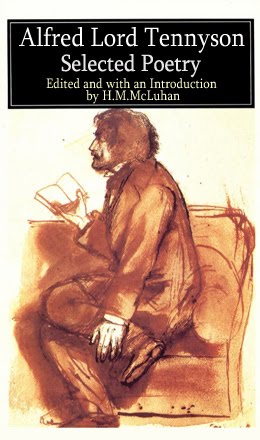






![PICNIC IN SPACE : The Great Minds of Our Time Film Series [1973]](https://blogger.googleusercontent.com/img/b/R29vZ2xl/AVvXsEjyov75DRIUBWcYLkzPYmupFy8CQ9dQ4Q798zDIN6jPNsSdBB_WuOcvPl4WjMAz10csG071oCO3BCUtIcKyHoIkCN0lCy0OxGCV_HrLXrGNKRpUiKMrqzkJh4LSc7jT_KrrqmClapSlVa8/s1600-r/PicnicInSpace.jpg)




























![more Hidden ground [re:Bride] : the "flippancy" of tone seemed just "right"](https://blogger.googleusercontent.com/img/b/R29vZ2xl/AVvXsEg-hQyF9KGGhKYc73nUGmV1bStJ4fTJVh0-TL1ZtikLZEv5ppjhB3DOhFcVuzGq-kByrwtTAWgCcE173pA3UTIPe7h6xJjsPt7lRvNym007ZsdXenMDLNimKcwtaTOqkGleoxmXOeCKtxXL/s1600-r/LEAVISLEWIS.png)
















![BABA WAWA [TODAY SHOW, Toronto City Hall 1970]](https://blogger.googleusercontent.com/img/b/R29vZ2xl/AVvXsEjTZAIFkA07K36WGk951vmZnLPU99fOdNzlvVhyphenhyphenhKZEKu2n2AW5EA1CDZGaTk0aYRXUv7IOXG39igaikoE6SWm8j7QIG96wYRE54oBXwvlaNCJzp15vdkrcqR97IMMny-8sHjM-VDotTOaY/s1600-r/babaWawa.jpg)

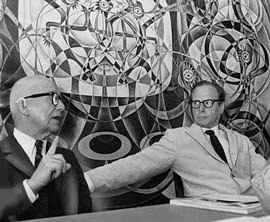

![enter the dragon : "typhon in america" [unpublished]](https://blogger.googleusercontent.com/img/b/R29vZ2xl/AVvXsEjdCnZdJ6JbaLc6hyUmUJo5UJ0m8WZSj_afYU9oRlHKIUgAIfcy2EPHNAptSRYEAmpOf0Xaa0B8iMgOTF302lY0Xmbyne0hvrdRyNo-t0Q-PPdzqX39uI3T5x5FppRPaQf9sSaXytrOpWVN/s1600-r/TIA.jpg)




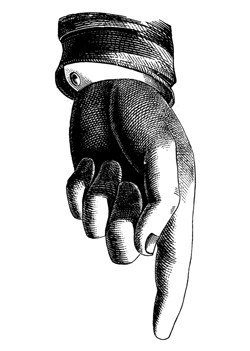






















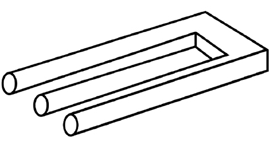









![Take Today [1972] : "the consumer becomes a producer..."](https://blogger.googleusercontent.com/img/b/R29vZ2xl/AVvXsEhA53bdVdTaXdQo1fDmrsI8oiAwF-3jampcanOq8uk3QMh8_ImkNsTiKd4-RnZY8Vbwqh1fymJiyCl1CSLcSonXHQM6XbnJYQi_Vu89gbAV4jVq73EtlbM3w6CthyphenhyphenV_pHEjE6eu_VhC489u/s1600-r/PROSUMER.jpg)
























































































![" Outtragedy of poetscalds!, Acomedy of letters " [ FW 425.24]](https://blogger.googleusercontent.com/img/b/R29vZ2xl/AVvXsEhJMrJLN3oPUb25A2tjQtWZcZxA4wZB0IOvaIAvxosAUqlFc258HHvzvlnHHvKhKq7hG3epo76izY2Bu0HC3Cy-8S46Rf0Wni3L8j8jEfpT7sXK3UFlXBMtN2v2JdrmdxvWk8VWKjkhN4-9/s1600-r/preplexLP.png)











![mars[HAL]9000 : " Tomorrow is our permanent address."](https://blogger.googleusercontent.com/img/b/R29vZ2xl/AVvXsEhmblupqmUiuV3GbyayJiDRGEO63TEgwjHi-i8b0kVYDvXrKFWTCyl-e21la4QJXC4nDFDzx51Omi6fYPLJcqRHFoP6zSsL0CVZF98eMf6mxCE2WDfvMmT4q9G3X45-P0IYGDmliE0fCR3C/s1600-r/marsHAL9000_250.jpg)




























































































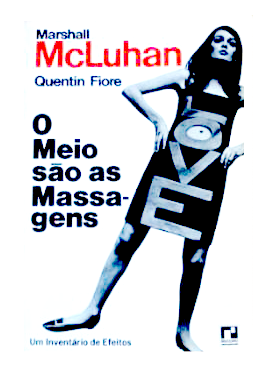













































































































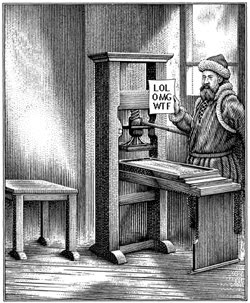








![Lucifer [from Latin] <br>meaning "light-bearer"](https://blogger.googleusercontent.com/img/b/R29vZ2xl/AVvXsEhq-2kZZOfh-Syv1Ewa0Ns2O6ZeP59pcsJp9ihhKcXCaovYZO_cKxffC5iSKOXFHr6E1jiHc6zedt1U6I95831RgpVdm3qk8-9C3y1yPyrCiQe4jgx-DsbeHnjKnw9t6Qx3ZM5TSYxiPj5H/s1600-r/lucifer.png)













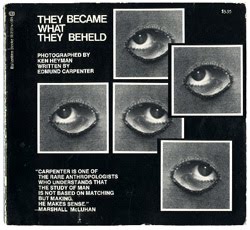























































































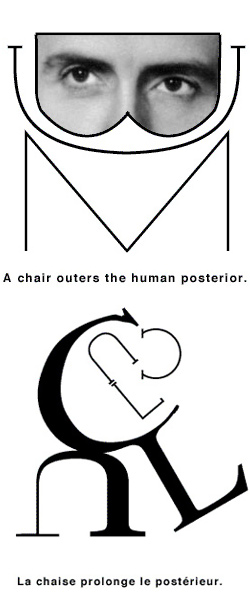






































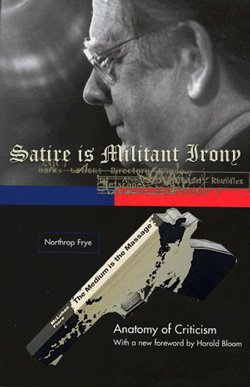























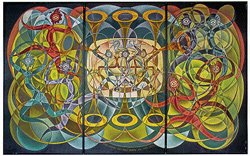










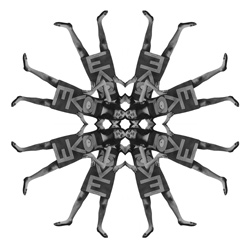





6 comments:
Menippus (Greek: Μένιππος) of Gadara, was a Cynic and satirist who lived during the 3rd century BCE. The Menippean satire genre is named after him.
He was a native of Gadara in Coele-Syria.[1] According to Diogenes Laërtius[2] he was originally a slave, amassed a fortune as a money-lender, lost it, and committed suicide through grief. His works (written in a mixture of prose and verse) are all lost. He discussed serious subjects in a spirit of ridicule, and especially delighted in attacking the Epicureans and Stoics. Strabo and Stephanus call him the "earnest-jester" (Greek: σπουδόγελοιος, spoudogeloios).
His writings exercised considerable influence upon later literature. One of the dialogues attributed to Lucian, his avowed imitator, who frequently mentions him, is called Menippus, but since the sub-title ("The Oracle of the Dead") resembles that of a work ascribed to Menippus by Diogenes Laërtius, it has been suggested that it is really the work of Menippus himself, or at least, imitated from his Necromancy.
Although the writings of Menippus no longer survive, there are some fragments of Varro's Saturae Menippeae, which were written in imitation of Menippus.[3]
Diogenes Laërtius says the following works were written by Menippus:[4]
Νέκυια - Necromancy
Διαθῆκαι - Wills
Ἐπιστολαὶ κεκομψευμέναι ἀπὸ τῶν θεῶν προσώπου - Letters in which the Gods are introduced
Πρὸς τοὺς φυσικοὺς καὶ μαθηματικοὺς καὶ γραμματικοὺς - Treatises to the Natural Philosophers, and Mathematicians, and Grammarians
Γονὰς Ἐπικούρου - Descendents of Epicurus
Τὰς θρησκευομένας ὑπ' αὐτῶν εἰκάδας - Observance of the twentieth day (celebrated in the Epicurean school)
In addition, Athenaeus mentions works called Symposium[5] and Arcesilaus,[6] and Diogenes Laërtius mentions a Sale of Diogenes (Greek: Διογένους Πράσει)[7] written by Menippus which seems to be the origin of the story that Diogenes of Sinope was captured by pirates and sold into slavery.
[edit] Notes
^ Stephanus Byz.; Strabo, xvi.
^ Diogenes Laërtius, vi. 99, 100.
^ Cicero, Acad. i. 2,8; Aulus Gellius, ii. 18; Macrobius, Sat. i. 11.
^ Diogenes Laërtius, vi. 101.
^ Athenaeus, 14.629F
^ Athenaeus, 14.664E
^ Diogenes Laërtius, vi. 29.
THE LIFE OF MENIPPUS
BY DIOGENES LAERTIUS
--------------------------------------------------------------------------------
I. MENIPPUS was also a Cynic, and a Phoenician by descent, a slave by birth, as Achaicus tells us in his Ethics; and Diocles informs us that his master was a native of Pontus, of the name of Baton; but that subsequently, in consequence of his importunities and miserly habits, he became rich, and obtained the rights of citizenship at Corinth.
II. He never wrote anything serious; but his writings are full of ridiculous matter; and in some respects similar to those of Meleager, who was his contemporary. And Hermippus tells us that he was a man who lent money at daily interest, and that he was called a usurer; for he used to lend on nautical usury, and take security, so that he amassed a very great amount of riches.
III. But at last he fell into a snare, and lost all his money, and in a fit of despair he hung himself, and so he died. And we have written a playful epigram on him:
This man was a Syrian by birth,
And a Cretan usurious hound,
As the name he was known by sets forth;
You've heard of him oft I'll be bound;
His name was Menippus-men entered his house,
And stole all his goods without leaving a louse,
When (from this the dog's nature you plainly may tell)
He hung himself up, and so went off to hell.
IV. But some say that the books attributed to him are not really his work, but are the composition of Dionysius and Zopyrus the Colophonians, who wrote them out of joke, and then gave them to him as a man well able to dispose of them.
V. There were six persons of the name of Menippus; the first was the man who wrote a history of the Lydians, and made an abridgment of Xanthus; the second was this man of whom we have been speaking; the third was a sophist of Stratonice, a Carian by descent; the fourth was a statuary; the fifth and the sixth were painters, and they are both mentioned by Apollodorus.
VI. The writings left by the Cynic amount to thirteen volumes; a Description of the Dead; a volume called Wills; a volume of Letters in which the Gods are introduced; treatises addressed to the Natural Philosophers, and Mathematicians, and Grammarians; one on the Generations of Epicurus, and on the Observance of the Twentieth Day by the philosophers of his school; and one or two other essays.
Milowicki, Edward J.
Wilson, R. Rawdon.
A Measure for Menippean Discourse: The Example of Shakespeare
Poetics Today - Volume 23, Number 2, Summer 2002, pp. 291-326
Duke University Press
Edward J. Milowicki and R. Rawdon Wilson - A Measure for Menippean Discourse: The Example of Shakespeare - Poetics Today 23:2 Poetics Today 23.2 (2002) 291-326 A Measure for Menippean Discourse: The Example of Shakespeare Edward J. Milowicki English, Mills College Robert Rawdon Wilson English, Alberta Abstract A vigorous classical tradition was adopted and adapted in the English Renaissance, a way of satirical writing that we call Menippean discourse. This tradition was well known to Shakespeare; indeed, it challenged his deepest creative instincts, and he deployed it extensively in his Troilus and Cressida. While delineating Menippean elements in Troilus, we also confront certain problems involved in defining -- even in discussing -- genre and character. Whether or not a distinct genre, traditionally called Menippean satire, can be arrived at or agreed upon remains problematic, as does the concept of genre itself. Instead, we attempt to establish a taxonomy that isolates and identifies what we call the major colligatory motifs, numerous yet distinct, that constitute Menippean discourse, recognizing and applying where profitable the generic analysis of Garry Sherbert (influenced by Northrup Frye), Mikhail Bakhtin's cultural-historical view of Menippean texts, and the taxonomic work of Eugene Kirk, Joel C. Relihan, and W. Scott Blanchard. The result of our study is a strong indication that Shakespeare's apprehension of the classical tradition was wide...
Further Reading ...
Relihan, Joel. 1993. Ancient Menippean Satire. Baltimore.
Kirk, Eugene P. Menippean Satire: An Annotated Catalogue of Texts and Criticism. New York: Garland, 1980.
Martin, Martial, "Préface" in Satyre Menippee de la Vertu du Catholicon d'Espagne et de la tenue des Estats de Paris, MARTIN Martial (édition critique de), Paris, H. Champion, 2007, "Textes de la Renaissance", n° 117, 944 p. ISBN : 9782745314840
Boudou, B., M. Driol, and P. Lambercy. "Carnaval et monde renverse." Etudes sur la Satyre Menippee. Ed. Frank Lestringant and Daniel Menager. Geneva: Droz, 1986. 105-118.
Vignes, Jean. "Culture et histoire dans la Satyre Menippee." Etudes sur la Satyre Mennippee. Ed. Frank Lestringant and Daniel Menager. Geneva: Droz, 1985. 151-99.
Kharpertian, Theodore D. A Hand to Turn the Time: The Menippean Satires of Thomas Pynchon. Rutherford: Fairleigh Dickinson U P, 1990.
Kharpertian, Theodore D. "Of Models, Muddles, and Middles: Menippean Satire and Pynchon's V." Pynchon Notes 17.Fall (1985): 3-14.
Courtney, E. Parody and Literary Allusion in Menippean Satire. Philologus 106 (1962): 86-100.
Tristram Shandy, Digressions, and the Menippean Tradition. Scholia Satyrica 1.4 (1975): 3-16.
Wilson, Robert Rawdon and Edward Milowicki. ""Troilus and Cressida": Voices in The Darkness of Troy." Jonathan Hart, ed. ""Reading The Renaissance: Culture, Poetics, and Drama."" New York: Garland, 1996. 129-144, 234-240.
Milowicki, Edward J. and Robert Rawdon Wilson. "A Measure for Menippean Discourse: The Example of Shakespeare." ""Poetics Today"" 23: 2 (Summer 2002). 291-326.
Payne, F. Anne. Chaucer and the Menippean Satire. Madison: U of Wisconsin P, 1981.
Bakhtin, Mikhail. Problems of Dostoevsky's Poetics, translated by Caryl Emerson. Minnesota U P 1984
"A moral point of view too often serves as a substitute for understanding in technological matters."
- Marshall McLuhan [1964]
"Moral indignation is a technique used to endow the idiot with dignity."
- Marshall McLuhan [1967]
Post a Comment